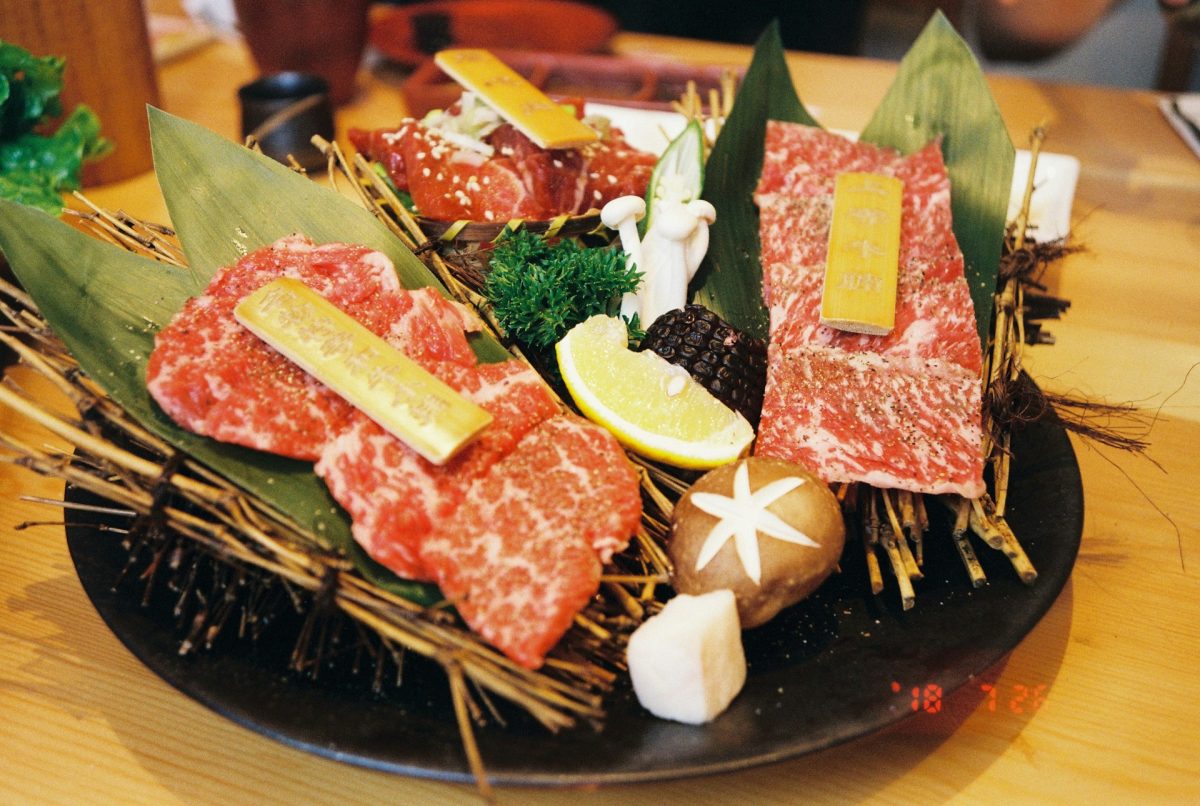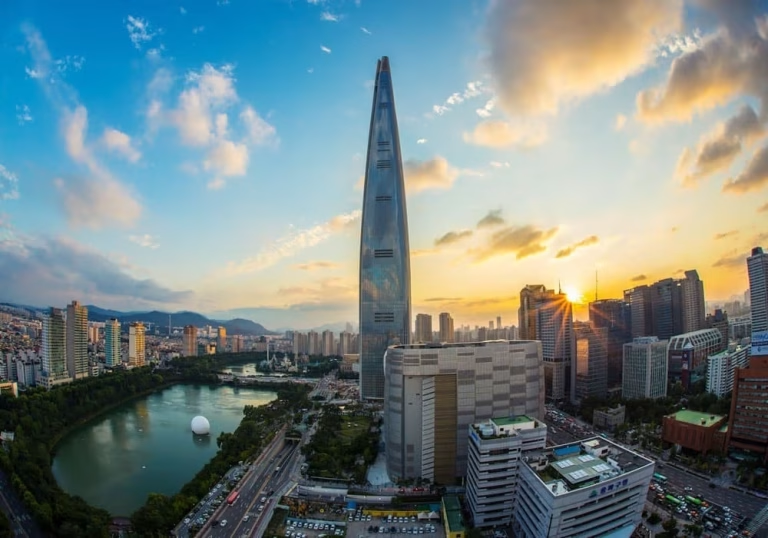Mount Fuji Travel Guide 2025 – What to See, Do & Know
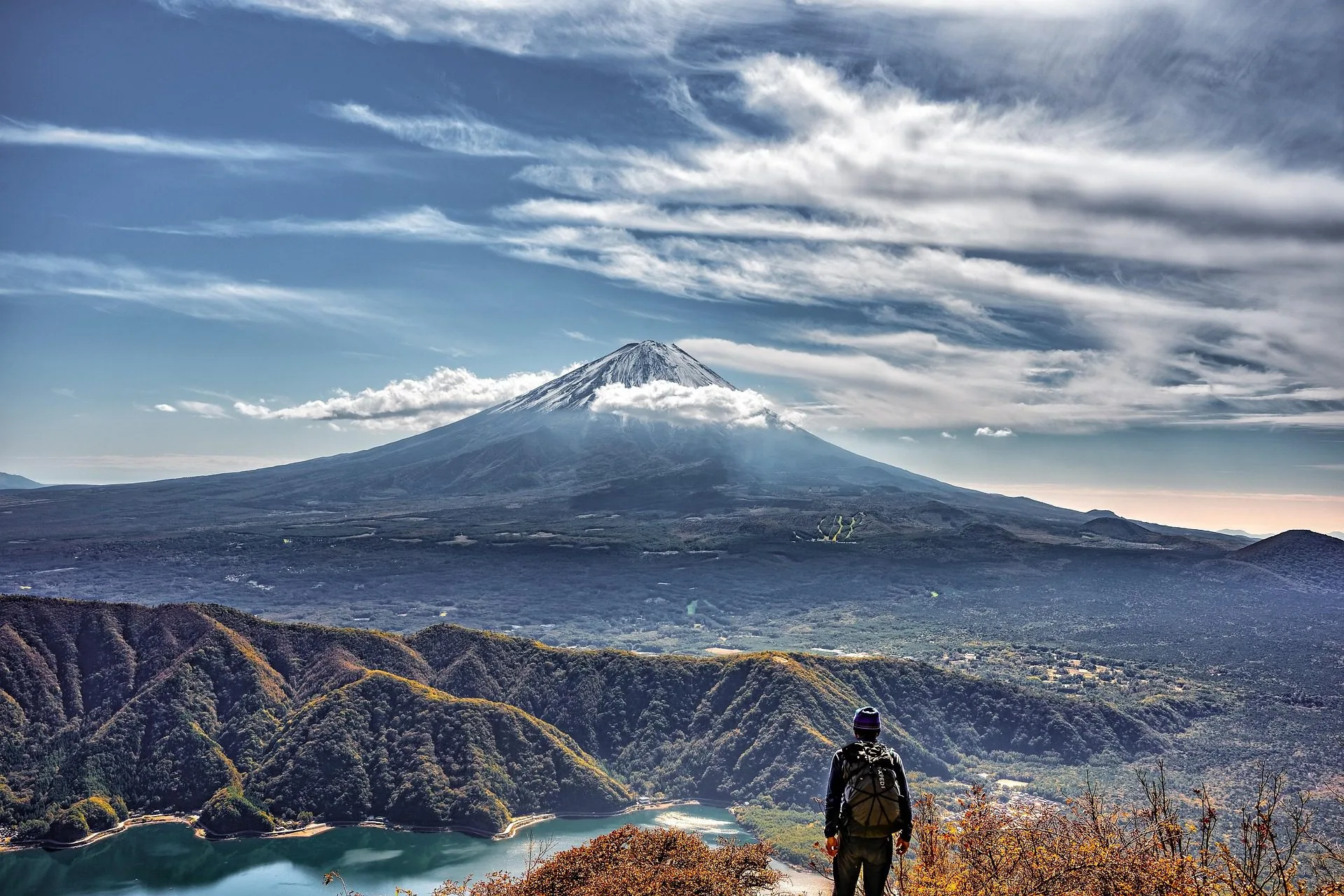
Mount Fuji (富士山, Fuji‑san) rises to 3,776 m, making it Japan’s highest peak and an enduring symbol of the nation’s spirit and beauty. More than a mountain, Fuji‑san is a living icon – shaping art, spirituality, and adventure for centuries with natural beauty, profound cultural significance, and adventures for every traveler.
My numerous visits across all seasons have revealed this mountain’s many personalities, from serene winter goddess to summer adventure playground.
It’s a journey that touches the soul, and one I’m eager to share.
This comprehensive Mount Fuji travel guide aims to provide you with all the information you need for an unforgettable trip.
Geology & Hydrology
Mount Fuji’s iconic symmetrical cone is the result of over 100,000 years of volcanic activity. It comprises three layers: Komitake (the oldest), Ko-Fuji, and Shin-Fuji (the youngest). The last major eruption in 1707 created the Hoei Crater on its southeastern side.
Fuji’s porous lava flows act as a giant natural filter. Approximately 2.2 billion tons of rain and snowmelt seep through its layers each year, emerging as the Fuji Five Lakes, aquifers supplying 1.7 million residents, and over 2,000 springs – most famously Oshino Hakkai
Although classified as an active volcano, Mount Fuji has remained dormant for over three centuries. Advanced monitoring systems keep track of seismic activity and gas emissions to ensure public safety.
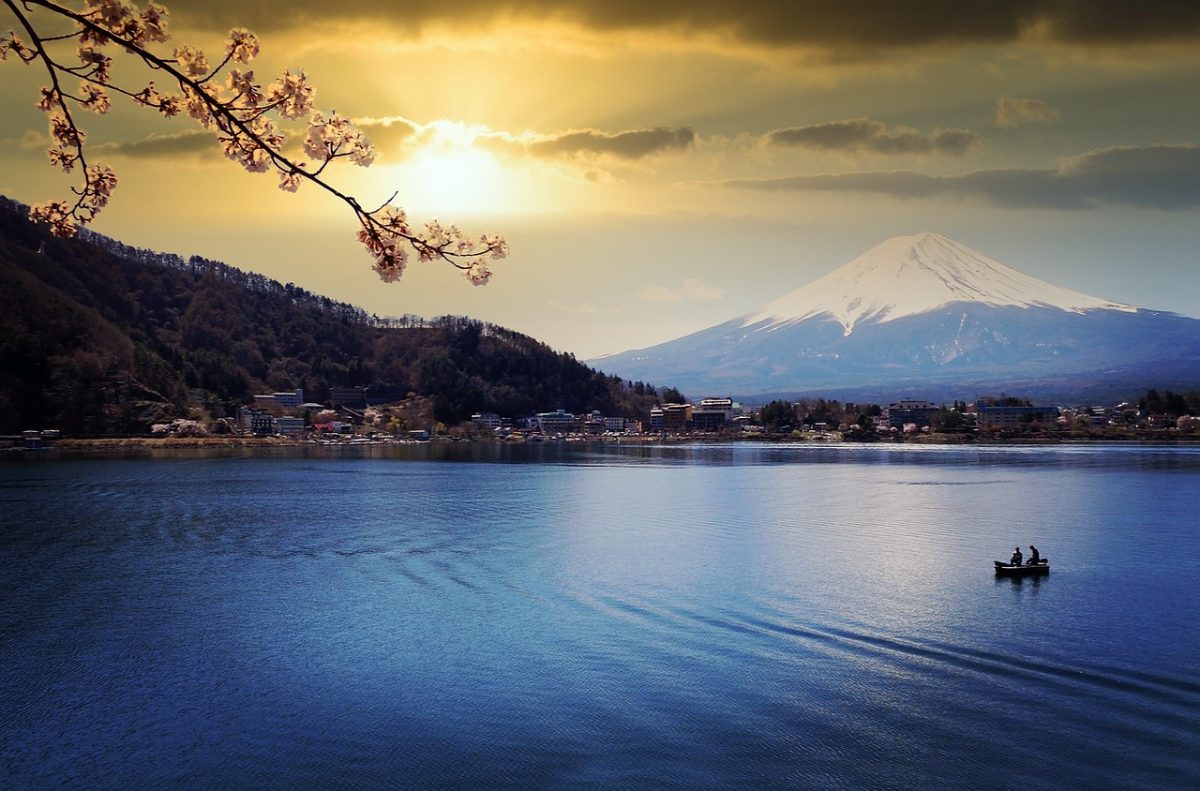
10 Fascinating Facts About Mount Fuji
Beyond its breathtaking beauty, Mount Fuji holds a wealth of fascinating secrets and stories. Here are some intriguing facts that highlight its unique character:
- A Triple Volcano: What appears as one majestic peak is actually a composite of three distinct volcanoes stacked upon each other: Komitake at the base, followed by Ko-Fuji (Old Fuji), and finally, Shin-Fuji (New Fuji) forming the iconic cone we see today.
- Sleeping Giant: While an enduring symbol of serenity, Mount Fuji is classified as an active volcano. Its last major eruption occurred in 1707, triggered by a powerful earthquake. This eruption lasted for over two weeks and rained ash down on Edo (present-day Tokyo).
- Sacred Summit: Revered in Shinto as a sacred mountain and believed to be the dwelling place of the goddess Konohanasakuya-hime, Mount Fuji has been a site of spiritual significance for centuries. Historically, it was a destination for pilgrimages, and until the Meiji era, women were forbidden from climbing to the summit.
- Relatively Young Icon: The perfectly symmetrical cone that makes Mount Fuji so recognizable is a relatively recent geological feature, having formed over the last approximately 10,000 years. This “ideal” shape contributes significantly to its artistic appeal.
- Privately Owned (Mostly): Surprisingly, Mount Fuji is primarily privately owned. The exception is the land from the 8th station upwards, which is owned by the Fujisan Hongu Sengen Taisha shrine, a testament to its deep spiritual connection.
- Artistic Muse: Mount Fuji’s captivating form has inspired countless artists and poets throughout history. Perhaps the most famous example is Katsushika Hokusai’s renowned series, “Thirty-Six Views of Mount Fuji“, which cemented its image in global consciousness.
- A Popular Climb: Every year, hundreds of thousands of people from around the world attempt to climb to the summit during the official climbing season (July to September). There are four main trails offering different experiences and levels of difficulty.
- Extreme Summit Weather: Even during the summer climbing season, the weather at the summit of Mount Fuji can be extreme and unpredictable. Temperatures often drop below freezing, and strong winds are common, making proper preparation essential.
- First Foreign Ascent: Sir Rutherford Alcock, the first British Consul General in Japan, is often credited with making one of the earliest recorded ascents of Mount Fuji by a non-Japanese person in 1860.
- National Symbol: Mount Fuji is widely recognized as a national symbol of Japan and is frequently depicted in art, photography, and advertising, representing the country’s beauty and spirit.
Cultural Significance
Inscribed in 2013 as a Cultural World Heritage Site, Mount Fuji’s “sacred and artistic landscape” includes 25 locations – shrines, pilgrimage routes, and viewpoints – that chronicle its spiritual and creative legacy
Spiritual Traditions
Shinto:
- In Shinto, Japan’s indigenous religion, Mount Fuji is revered as a sacred mountain, believed to be a dwelling place for kami (spirits).
- It is revered as the home of Konohanasakuya-hime, the blossom-princess kami.
- Over 1,300 Asama Shrines across Japan honor Fuji’s protective spirit and Konohanasakuya-hime, and these shrines were built to appease her and prevent volcanic eruptions.
- Pilgrims have climbed the mountain for centuries as part of spiritual rituals.
Shugendo and Buddhism:
- Mount Fuji also holds significance in Japanese Buddhism, particularly as a center for Shugendo, a syncretic religion combining traditional mountain worship and esoteric Buddhism.
- Ascetic practitioners have climbed its slopes since the 12th century, engaging in rituals such as crater circumambulation and sunrise worship at the summit.
Artistic Legacy
- Mount Fuji’s beauty has captivated artists and poets for centuries.
- The earliest extant anthology of Japanese poetry, the Manyoshu (compiled around 1,200 years ago), includes poems depicting Mount Fuji.
- It also features in classic tales like “The Tale of the Bamboo Cutter”.
- During the Edo period (1603-1868), when climbing for worship became widespread, Mount Fuji became a central subject for artists.
- Katsushika Hokusai’s “Thirty-Six Views of Mount Fuji” and Utagawa Hiroshige’s works are iconic examples, showcasing the mountain from various perspectives and in different seasons.
- These artistic depictions influenced Western artists like Vincent van Gogh and Claude Monet.
- From 8th-century Manyoshu poetry to Hokusai’s “Thirty-Six Views” and Hiroshige’s “Red Fuji,” artists have immortalized Fuji’s moods.
- The Fujisan World Heritage Center offers digital exhibits comparing classic prints with modern photography.
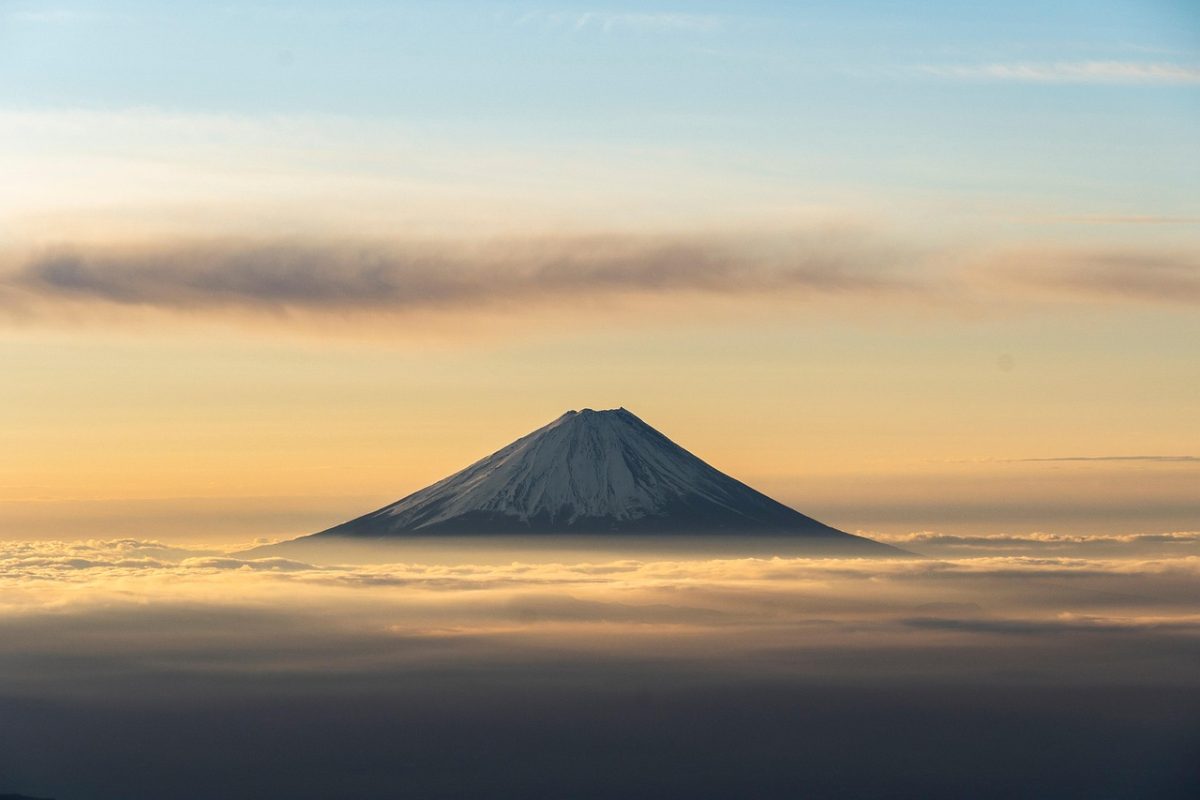
Mount Fuji Across the Seasons
Mount Fuji’s allure transforms throughout the year, offering distinct experiences and breathtaking views. Strategic timing and location enhance any visit.
Optimal Visual Conditions
To maximize the chances of clear views, it’s important to consider the optimal times of day and year. Analysis of meteorological data reveals the following:
Golden Hours:
- Summer: 4:30-5:30 AM
- Winter: 6:00-7:00 AM
Visibility Probabilities:
| Month | Clear View % | Best Window |
|---|---|---|
| January | 68% | 7:00-9:00 AM |
| April | 42% | 5:30-7:30 AM |
| July | 27% | 4:00-5:00 AM |
| October | 81% | 6:00-8:00 AM |
Seasonal Activities and Attractions: A Year-Round Calendar
Mount Fuji’s activities and attractions vary significantly depending on the time of year:
Winter (Dec-Feb): Serenity and Diamond Fuji
Key Natural Event:
- Diamond Fuji (sun alignment) occurs 12/20-1/10 at Lake Yamanakako
- Frost smoke formations require temperatures below -15°C
Access Considerations:
- Snowshoe routes are maintained at Fuji Omuro Sengen Shrine
- Emergency heat shelters are operational above 2,500m
Cultural Experiences:
- Lake Kawaguchiko Winter Fireworks
- Lake Yamanakako Ice Candle Festival
Outdoor Activities:
- Fujiten Snow Resort (skiing and snowboarding)
- Viewing Mount Fuji from a traditional hot spring (Onsen)
- Fuji Yurari Onsen (popular choice with scenic views)
Spring (Mar-May): Blossoms and Hiking
Key Natural Events:
- Cherry blossom viewing (Hanami) is a quintessential spring experience.
- Locations like Akakurayama Sengen Park (home to the Chureito Pagoda) and the banks of the Urui River offer spectacular displays with Mount Fuji as a backdrop.
- The Fuji Shibazakura Festival near Lake Motosuko features pink moss phlox blooms.
- The colorful flower fields at Lake Yamanakako’s Hana no Miyako are also a major attraction.
Outdoor Activities:
- Early off-season climbing (mid-April to June) is an option for a less crowded hiking experience.
- However, be prepared for colder weather, potential snow and ice, and trails that may not be maintained. Proper equipment is essential.
Summer (Jul-Sep): Climbing and Water Sports
Outdoor Activities:
- This is the official climbing season.
- The four main trails are Yoshida, Subashiri, Fujinomiya, and Gotemba (Yoshida is the most popular).
- The Fuji Five Lakes become hubs for water sports.
- Lake Yamanakako and Lake Kawaguchiko offer boating, fishing, windsurfing, waterskiing, and paragliding.
- Cave exploration provides a cool escape from the heat.
- The Narusawa Ice Cave, Fugaku Wind Cave, and Saiko Bat Cave are popular choices.
Cultural Experiences:
- Fuji-Q Highland amusement park offers exhilarating rides with Mount Fuji as a backdrop.
Autumn (Sep-Nov): Foliage and Photography
Key Natural Event:
- Maple viewing (Koyo) is a major attraction.
- Lake Kawaguchiko and Fujimi Kotoku Koen Park are particularly beautiful spots.
- The Fujikawaguchiko Autumn Leaves Festival is held in mid-November.
Outdoor Activities:
- Hiking along the various trails around the base of the mountain.
- Asagiri Kogen offers views of Mount Fuji from fields of golden pampas grass.
Photography:
- The clear air and vibrant foliage create ideal conditions for capturing stunning images of Mount Fuji.
Climbing Mount Fuji: Trails and Safety
For those planning to climb Mount Fuji during the official climbing season (July-Sep), here’s a breakdown of trail information:
Success Rates:
| Trail | Success Rate | Avg. Time | Rescue Incidence |
|---|---|---|---|
| Yoshida | 78% | 7h32m | 2.10% |
| Subashiri | 82% | 6h58m | 1.40% |
| Fujinomiya | 85% | 6h12m | 0.90% |
| Gotemba | 68% | 9h01m | 3.20% |
Health and Safety Considerations:
Climbers should be aware of the following health and safety considerations:
- Acute Mountain Sickness (AMS) is a potential risk; consult with a doctor about preventative measures.
- UV exposure at the summit is significantly higher than at sea level; use appropriate sun protection.
- Check official resources for the latest safety guidelines and regulations before climbing.
Important: Be Prepared for Emergencies! Emergency Contacts:
- Police: 110
- Ambulance: 199
- Fire Department: 119
Also carry the specific Mountain Rescue contact number for Yamanashi (055-237-1111) or Shizuoka Prefecture (054-254-2111).
Best Mount Fuji Viewpoints
Mount Fuji’s beauty can be admired from numerous vantage points, each offering a unique and unforgettable perspective. Below are the most iconic and rewarding spots, complete with practical details to help you plan your visit.
Chureito Pagoda
- Location: Arakurayama Sengen Park, Fujiyoshida
- Description: One of the most iconic images of Mount Fuji features this vibrant red five-story pagoda, a peace memorial within the Arakura Sengen Shrine.
- Key Feature: Panoramic view encompassing the city of Fujiyoshida and the majestic silhouette of Mount Fuji.
- Access & Distance:
- By Train: Take the JR Chuo Line from Shinjuku to Otsuki (2 hours), transfer to the Fujikyuko Line to Shimoyoshida Station.
- On Foot: ~20 min walk via 400 steps (or accessible ramp) from Shimoyoshida Station.
- By Bus: Mount Fuji World Heritage Loop Bus to Chureito Iriguchi stop.
- Entry & Hours: Free • Open 24/7
- Best Times to Visit: Early April (cherry blossom season) and late November (autumn foliage).
Accessibility: Requires climbing approximately 400 steps, making it less accessible for individuals with mobility challenges. No entry fee.
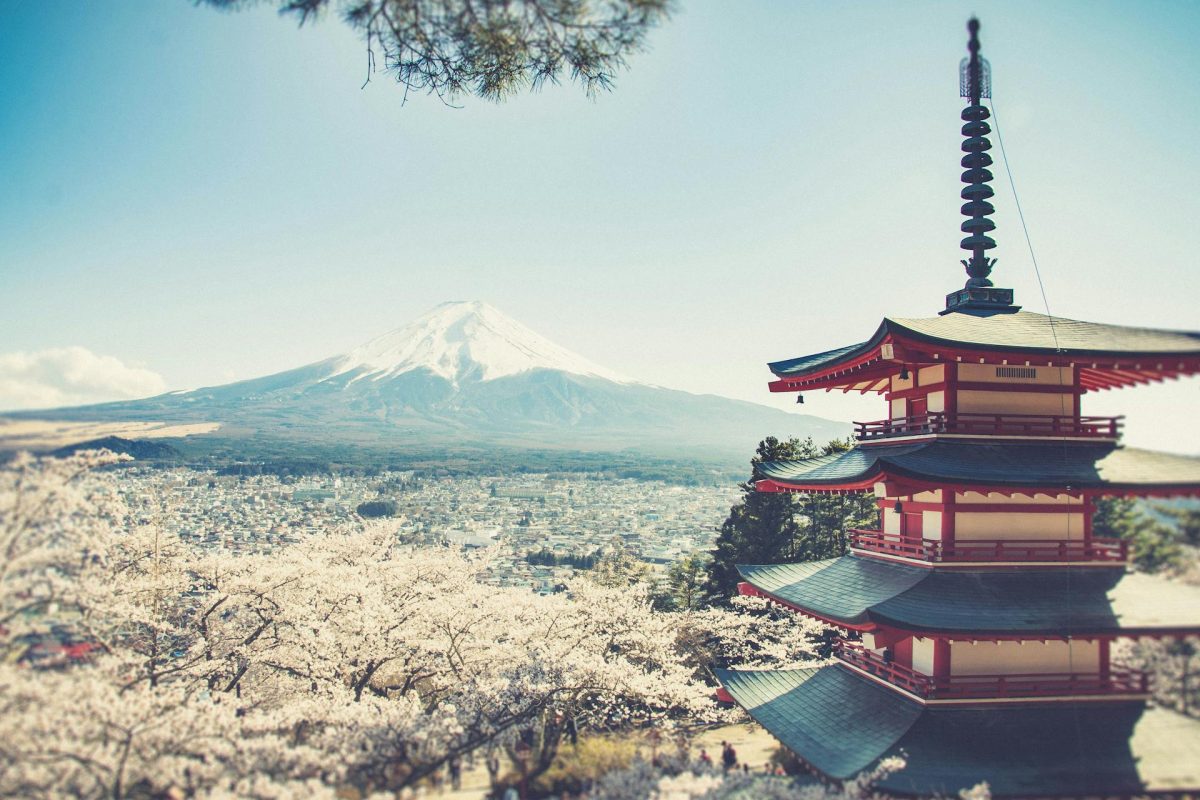
Lake Kawaguchiko:
- Location: Northern shore of Lake Kawaguchiko
- Description: The most easily accessible of the Fuji Five Lakes, offering postcard-worthy views from various points along its shoreline.
- Key Features: Leisurely strolls, photography, boat rentals, mirror-like reflections on calm days.
- Access & Distance: 10 min walk or 5 min taxi from Kawaguchiko Station; 2.5 hours from Tokyo by highway bus or Fuji Excursion train.
- Entry & Hours: Free • All day
- Specific Spots:
- Oishi Park: Renowned for seasonal beauty, with lavender fields in early summer and autumn foliage. Generally accessible.
- Ubuyagasaki: Offers views of Fuji framed by cherry blossoms in spring. Generally accessible.
- Northern Shores (near Kawaguchiko Music Forest Museum): Offers expansive and often less crowded views. Generally accessible.
- Around Kawaguchiko Station: Easily accessible with many hotels offering lake and Fuji views.
- Best Time to Visit: Autumn (mid-October to early November) is particularly enchanting.
- Accessibility: Generally accessible, with accommodations like the Fuji Lake Hotel offering accessible rooms.
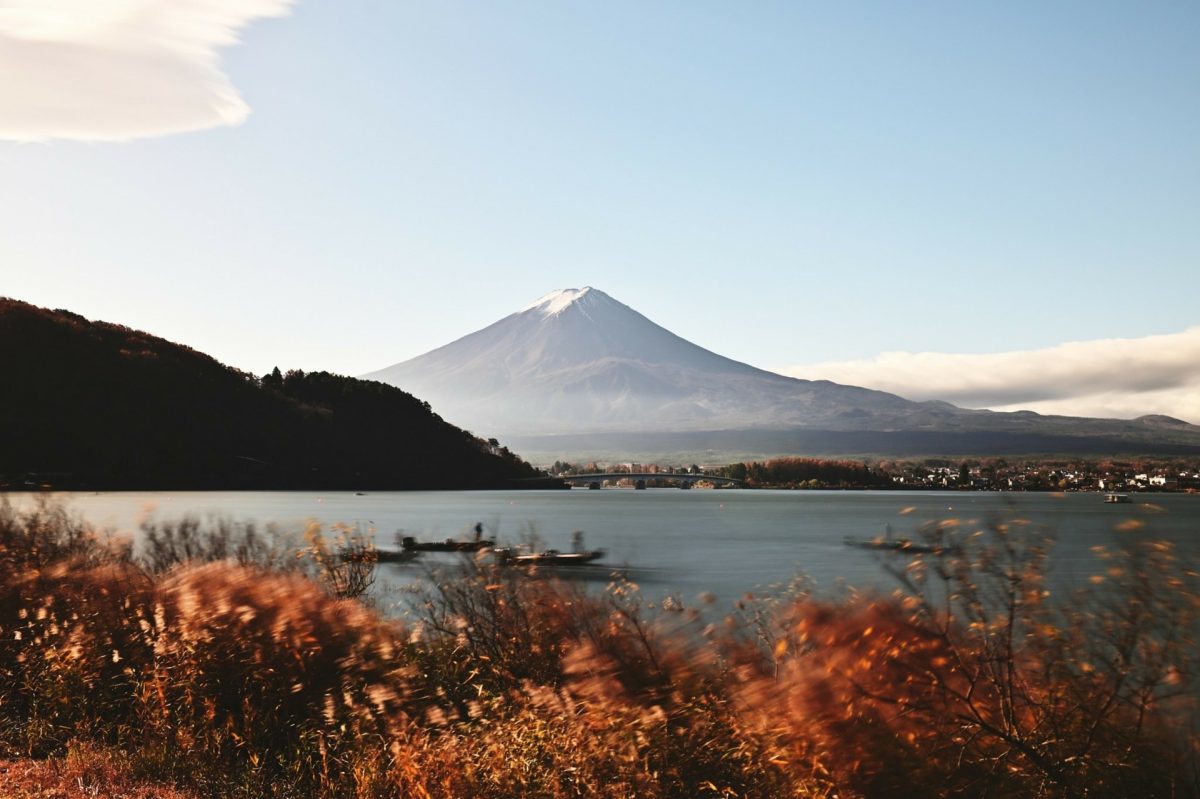
Lesser-Known Gems: Unique Perspectives
These viewpoints offer stunning vistas of Mount Fuji, often away from the main tourist crowds.
Fujiyama Twin Terrace:
- Location: Near Lake Kawaguchiko shoreline
- Access & Distance: 5 min walk from Kawaguchiko Station; free parking.
- Entry & Hours: Free • 8 AM–6 PM
- Why Go: Unobstructed Fuji views without crowds.
Shiraito Falls:
- Location: Fujinomiya, 20 min drive from Fuji-Shibazakura Festival site
- Access & Distance: Public bus from Fujinomiya Station to Shiraito-no-taki bus stop.
- Entry & Hours: ¥300 • 8 AM–5 PM
- Why Go: Fuji framed by cascading falls; best in summer and fall.
- Best Times to Visit: Summer and fall are recommended.
- Accessibility: Relatively easy access from parking areas with short walks.

Imamiya Tea Field:
- Description: Located in Fuji City, offering a stunning contrast between vibrant green tea fields and Mount Fuji.
- Access & Distance: Generally accessible by car with parking available (specific details might vary).
- Best Time to Visit: Especially beautiful in May when the tea fields are lush.
Lake Tanuki:
- Location: Asagiri Highlands (west of Lake Motosu)
- Access & Distance: 15 min drive from Fujinomiya Station; public bus limited.
- Entry & Hours: Free • All day
- Facilities: Parking, restrooms, picnic areas
- Why Go: Mirror-like reflections of Fuji on calm mornings.
- Best Times: Early summer and autumn.
Saiko Iyashi no Sato Nenba:
- Location: Saiko village, west shore of Lake Saiko
- Description: A cultural park with reconstructed traditional thatched-roof cottages, blending natural beauty with historical charm and offering unique photo opportunities of Mount Fuji.
- Access & Distance: 20 min bus ride from Kawaguchiko Station (Green Line).
- Entry & Hours: Free • 9 AM–5 PM
- Why Go: Thatched-roof cottages, craft workshops, Fuji views.
Tenjoyama Park:
- Location: Near the eastern shore of Lake Kawaguchiko
- Description: Accessible via the Mt. Fuji Panoramic Ropeway.
- Key Feature: Sweeping views of Mount Fuji and Lake Kawaguchiko.
- Access & Distance: Short walk from Kawaguchiko Station to the ropeway station.
- Ropeway Round-Trip Ticket: 900 yen.
Oshino Hakkai Springs:
- Location: Oshino village, near Lake Yamanaka
- Description: A collection of eight pristine ponds with traditional Japanese scenery and crystal-clear water fed by Mount Fuji’s melted snow.
- Key Feature: Offers opportunities for viewing “Diamond Fuji” (the moment when the sunrise or sunset aligns perfectly with the peak of Mount Fuji).
- Access & Distance: Easily accessible by bus from Kawaguchiko Station or Gotemba Station.
- Best Times to Visit: Spring and winter for clearer views and potential “Diamond Fuji” sightings.
Miho-no-Matsubara Coastal Pines
- Location: Shizuoka Prefecture coast (30 km southwest of Fuji)
- Access & Distance: 60 min drive from Shin-Fuji Station; limited parking.
- Entry & Hours: Free • All day
- Why Go: UNESCO-listed pine grove against a black-sand beach—one of Japan’s classic sea-and-mountain vistas
- Best Times: Sunset in autumn & winter for fiery skies.
Nihondaira Plateau
- Location: Overlooking Shimizu Port & Suruga Bay
- Access & Distance: 15 min taxi from Shimizu Station; 90 min from Tokyo by Shinkansen to Shizuoka + local bus.
- Entry & Hours: Free • All day
- Facilities: Observation deck, café, restrooms
- Why Go: Panoramic views of Fuji, tea fields, and Izu Peninsula
- Best Times: Clear winter mornings.
Tip: For the best experience, consult a map to understand the locations of these viewpoints and plan your itinerary accordingly.
50+ Must‑Do Experiences Around Mount Fuji
To further enrich your journey and help you uncover even more of what this iconic region has to offer, this travel guide to Fuji highlights an extended list of 50+ must-do activities.
Cultural & Spiritual Immersion
- Visit the Fujisan World Heritage Center: Gain insights into Mount Fuji’s cultural significance and natural history through engaging exhibits.
- Explore Saiko Iyashi-no-Sato Nenba: Step back in time at this reconstructed traditional village showcasing thatched-roof houses and local crafts.
- Visit the Arakurayama Sengen Shrine: Beyond Chureito Pagoda, discover cultural insights and additional viewpoints at this historic shrine.
- Tour the Ide Sake Brewery: Learn about traditional sake production and sample local brews at this historic facility.
- Explore the Fujisan Hongu Sengen Taisha Shrine: Visit the head shrine dedicated to the deity of Mount Fuji, steeped in history and spiritual significance.
- Visit the Yamanashi Gem Museum: Discover a dazzling collection of precious stones and learn about regional gemology.
- Participate in a Traditional Tea Ceremony: Experience the art of Japanese tea preparation in a setting with majestic views.
- Attend the Yoshida Fire Festival: In late August, experience this vibrant festival featuring massive torches illuminating Fujiyoshida’s streets.
- Visit the Fuji Visitor Center: Get detailed information about the mountain’s history, geology, and cultural significance.
- Explore the Fuji Sengen Shrine Complex: Visit multiple shrines dedicated to the goddess of Mount Fuji spread throughout the region.
- Browse Local Art Galleries: Enjoy exhibits featuring local artists whose works are inspired by Mount Fuji’s beauty.
- Visit Traditional Japanese Gardens: Enjoy meticulously maintained gardens offering peaceful settings with views of Mount Fuji.
- Try Japanese Calligraphy Workshops: Learn the art of calligraphy in a serene setting with Mount Fuji as your muse.
- Explore Local Markets and Souvenir Shops: Shop for unique crafts, local produce, and Mount Fuji-inspired souvenirs.
- Join a Japanese Cooking Class: Learn to prepare traditional dishes using local ingredients, often with stunning Fuji views.
- Tour the Itchiku Kubota Art Museum: Admire exquisite kimono art and learn about traditional dyeing techniques that capture the essence of Japanese craftsmanship.
- Visit the Kawaguchiko Music Forest Museum: Immerse yourself in a European-inspired garden and museum dedicated to automatic musical instruments.
- Visit the Mount Fuji Radar Dome Museum: Explore the history of meteorological observations on Mount Fuji through interactive exhibits.
- Explore the Fujikawa Craft Park: Engage in traditional crafts like pottery and indigo dyeing in a hands-on workshop environment.

Scenic & Natural Wonders
- Visit Chureito Pagoda: Capture the quintessential view of Mount Fuji framed by this five-story pagoda, especially stunning during cherry blossom season.
- Explore the Fuji Five Lakes (Fujigoko): Discover the scenic beauty of Lakes Kawaguchi, Yamanaka, Sai, Shoji, and Motosu – each offering a unique perspective of Mount Fuji.
- Ride the Mount Fuji Panoramic Ropeway: Ascend Mount Tenjo for breathtaking vistas of Mount Fuji and Lake Kawaguchi.
- Visit Oshino Hakkai: Explore this traditional village famous for its eight pristine ponds fed by Mount Fuji’s melted snow.
- Explore the Narusawa Ice Cave: Delve into this year-round icy cavern formed by ancient lava flows.
- Discover the Fugaku Wind Cave: Experience cool temperatures and unique geological formations within this natural wonder.
- Attend the Fuji Shibazakura Festival: Witness expansive fields of pink moss phlox blooming with Mount Fuji in the background during spring.
- Marvel at Shiraito Falls: Admire a wide curtain of spring water cascading down a 20-meter-high cliff, reminiscent of delicate white threads.
- Explore the Fuji Subaru Line 5th Station: Enjoy shops, restaurants, and panoramic views at this popular halfway point up Mount Fuji.
- Stroll Through Oishi Park: Wander amid seasonal flower displays with Mount Fuji providing a picturesque backdrop.
- Attend the Lake Kawaguchi Herb Festival: In early summer, enjoy vibrant lavender fields and herb-related festivities around the lake.
- Discover the Mount Fuji Lava Cave: Explore unique geological formations created by ancient lava flows beneath the mountain.
- Participate in a Mount Fuji Photography Tour: Join a professional tour to capture the best sunrise and sunset views of the mountain.
- Take a Scenic Drive Along the Fuji Skyline: Experience breathtaking views and discover hidden stops along the mountain roads.
- Experience Nighttime Illuminations: Enjoy special lighting events during festivals or seasonal displays around Mount Fuji.
- Take a Hot Air Balloon Ride: Soar above Mount Fuji and its stunning surroundings for a unique aerial perspective during select seasons.
- Miho-no-Matsubara Coastal Pines: A 7 km black-sand beach lined with 30,000 pines – this UNESCO-listed grove offers one of Japan’s classic vistas of Mt. Fuji against the sea.
- Nihondaira Plateau: Overlooking Shimizu Port and Suruga Bay, Nihondaira offers sweeping panoramas of Fuji, tea fields, and the Izu Peninsula.
- Shinkansen Fuji View: The Tokaido Shinkansen between Tokyo and Osaka provides a fleeting but unforgettable glimpse of Fuji—best from seat E around 40 minutes after departing Tokyo.
Adventure & Outdoor Activities
- Climb Mount Fuji: Experience the iconic ascent during the official climbing season from early July to early September.
- Experience Fuji-Q Highland: Thrill-seekers can enjoy record-breaking roller coasters and attractions at this amusement park near the mountain’s base.
- Hike the Aokigahara Forest: Venture into the “Sea of Trees” – a dense forest known for its unique flora, lava caves, and mysterious ambiance. (Note: Advise staying on marked trails).
- Cycle Around Lake Yamanaka: Enjoy a leisurely bike ride along the shores of the largest Fuji Five Lake, with Mount Fuji as your stunning backdrop.
- Enjoy Water Sports on Lake Motosu: Engage in kayaking, windsurfing, or fishing on this deep, crystal-clear lake.
- Hike the Subashiri Trail: Opt for a less crowded ascent of Mount Fuji, renowned for its lush greenery and tranquil environment.
- Hike to the Hoei Crater: Trek to the largest crater on Mount Fuji’s southeastern flank, formed during the 1707 eruption.
- Visit the Mount Fuji Children’s World: Perfect for families, this park offers outdoor activities and play areas inspired by nature.
- Join a Guided Nature Walk: Discover local flora and fauna with an expert guide along scenic trails in the countryside.
- Go Horseback Riding in the Countryside: Enjoy guided rides through scenic landscapes with the mountain as your backdrop.
Relaxation & Local Cuisine
- Relax in an Onsen with Mount Fuji Views: Unwind in hot springs such as those at Hotel Green Plaza Hakone, where serenity meets majestic mountain scenery.
- Experience Gotemba Premium Outlets: Shop for both international and Japanese brands at discounted prices – all with Mount Fuji in the distance.
- Attend Seasonal Food Festivals: Savor regional dishes and street food at festivals celebrating local culinary traditions.
- Visit a Local Farm or Orchard: Participate in farm activities or seasonal fruit picking near the Fuji area.
- Join a Yoga or Meditation Retreat: Relax in serene environments that offer peace and rejuvenation enhanced by nature’s grandeur.
Local Culture, Food, and Festivals
The Mount Fuji region offers unique and charming experiences that go beyond the typical tourist attractions.
Culinary Delights
Food enthusiasts can savor a variety of local specialties:
- Renowned Egg Salad Sandwich from Haostay Coffee: A beloved local favorite known for its unique and delicious recipe.
- Delicious Beef Katsu at the Beef Cutlet Specialty Store Koshuya: Offering perfectly cooked and flavorful breaded beef cutlets.
- Unique Fuji-Inspired Shortbread Cookies from Fujiyama Cookies: Delightful cookies shaped like Mount Fuji, perfect as a souvenir or treat.
- Hearty Houtou Noodles: A regional specialty, this is a warm and comforting miso-based noodle stew often filled with vegetables and meat.
- Crispy Tempura: Enjoy lightly battered and fried seasonal vegetables and seafood, often served with a dipping sauce.
- Fujinomiya Yakisoba: The city’s famous fried noodle dish, made with thick, chewy noodles and local cabbage.
Onsen Retreats: Relaxation with a View
Indulging in an onsen (hot spring) experience with a view of Mount Fuji is highly recommended for relaxation and stunning scenery.
- Popular Onsen: Fuji Yurari Onsen is a well-known choice offering various types of baths with magnificent views.
- Ryokan Experience: For a quintessential Japanese experience, stay at a traditional Ryokan. Look for options that include exquisite kaiseki meals (multi-course Japanese haute cuisine), such as Fujikawaguchiko Onsen Konansou, and consider those with private rotenburo (outdoor baths) for ultimate relaxation.
- Sunnide Resort Yamanashi: Known for its accommodations that feature direct mountain views, some of which may also include onsen facilities.
Important Onsen Etiquette: Remember to wash your body thoroughly before entering the onsen baths, and swimwear is generally not permitted.
Museums and Traditional Crafts
Explore the local arts, history, and traditions through museums and hands-on experiences.
Museums:
- The Itchiku Kubota Art Museum: Showcases the exquisite kimonos and artworks of textile artist Itchiku Kubota.
- The Kawaguchiko Music Forest Museum: Offers a whimsical experience with European-style gardens and antique musical instruments.
Traditional Crafts & Workshops:
- Tea Ceremony & Tea Fields: Visit a local tea plantation and participate in a hands-on tea ceremony workshop in Fujinomiya, known for its world-renowned Shizuoka tea.
- Calligraphy & Indigo-Dye Workshops: Find studios around Kawaguchiko where you can learn shodo (calligraphy) or aizome (indigo dyeing) in a single-session class.
Sake Brewery Tours:
- Ide Sake Brewery: Offers a glimpse into traditional sake making with tours and tasting opportunities.
- Fuji Shuzo Brewery: Consider a tour at Fuji Shuzo Brewery in Fujiyoshida, where you can sample fresh brews and learn about traditional sake production methods.
Festivals & Cultural Activities
Experience the vibrant local culture through seasonal events and celebrations.
- Yoshida Fire Festival (August 26th): A dramatic torch festival in Fujiyoshida that lights the streets and pays homage to the mountain’s spirit.
- Shibazakura Festival (April–May): Witness stunning fields of pink moss phlox with Mount Fuji as a breathtaking backdrop – a must-see for photographers.
- Oshino Hakkai Spring Festival (April): Celebrates the pristine ponds with traditional music and dance performances.
Mount Fuji Travel Essentials: Practical Tips for a Successful Trip
Before embarking on your journey, consider downloading a Mount Fuji travel map to assist with navigation.
Top 20 Mount Fuji Travel Tips
Pre-Trip Planning:
- Mandatory Climbing Fee: As of March 2025, a mandatory fee of ¥4,000 has been imposed for all hikers using Mount Fuji’s four main trails (Yoshida, Subashiri, Gotemba, and Fujinomiya). This fee addresses overtourism concerns and funds safety measures; ensure to factor this into your budget.
- Advance Reservations Required: Climbers must make prior reservations or register their details via the official online system before their ascent. Complete this process well in advance of your planned climb.
- Entry Time Restrictions: Climbers without mountain hut reservations are restricted from entering the trails between 2 p.m. and 3 a.m. Plan your ascent accordingly.
- Book Accommodations and Transportation Early: Secure your lodging and travel arrangements well ahead of time, especially during peak seasons (summer for climbing, spring/autumn for sightseeing).
- Learn Basic Japanese Phrases: While English is spoken in tourist areas, knowing a few basic Japanese phrases can enhance your interactions with locals and is always appreciated.
- Explore Alternative Attractions: If you’re not planning to climb Mount Fuji, the region offers many other attractions. Explore the stunning Fuji Five Lakes (such as Lake Kawaguchiko with its iconic views, Lake Yamanakako, Lake Saiko, Lake Shojiko, and Lake Motosuko), relax and rejuvenate in traditional onsen (hot springs) offering breathtaking mountain vistas, or delve into the local culture by visiting sites like the Itchiku Kubota Art Museum showcasing exquisite kimono art, the charming historical village of Saiko Iyashi no Sato Nenba, or the serene Oshino Hakkai Springs. Don’t forget to try the delicious local cuisine, such as hearty Houtou noodles and other famous regional ramen during your trip.
Health and Safety:
- Check Weather Forecasts: Before your visit, especially if you plan to climb, monitor the weather conditions to ensure a safe experience.
- Dress in Layers: Be prepared for varying temperatures by wearing comfortable, layered clothing.
- Sun Protection: Bring sunscreen, sunglasses, and a hat to protect against sun exposure.
- Stay Hydrated: Carry sufficient water, particularly when hiking, to maintain hydration.
- Altitude Acclimatization: If ascending from a lower altitude, consider spending a night at a higher elevation before your climb to reduce the risk of altitude sickness.
- Physical Preparation: Ensure you have a reasonable level of physical fitness and engage in some training beforehand if you plan to climb Mount Fuji.
- Sunrise Climbs: To witness the sunrise from the summit, start your ascent in the late evening or early morning. Check the estimated sunrise time for your chosen date.
- Trail Conditions: Check for trail closures and conditions, especially during the shoulder seasons, by consulting official websites for any updates.
- Travel Insurance: Consider obtaining travel insurance that covers medical emergencies and unforeseen circumstances.
On-Site Practices:
- Carry Sufficient Cash: While some establishments accept credit cards, many smaller shops, mountain huts, and remote areas may only accept cash.
- Dispose of Trash Properly: Follow Leave No Trace principles to preserve the natural environment.
- Respect Local Customs: Familiarize yourself with Japanese customs, such as removing your shoes indoors and being mindful of noise levels in public spaces.
- Utilize Information Centers: Visit local information centers for valuable advice, maps, and updates on trail conditions.
- Wildlife Awareness: Observe animals from a distance and avoid feeding them to prevent disrupting their natural behavior.
When to See Mount Fuji
The optimal time to visit Mount Fuji depends on your intended activities and the experiences you seek:
- Climbing Season (July to Early September): This period marks the official climbing season when trails and mountain facilities are open. Weather conditions are generally favorable, making it ideal for those aiming to reach the summit.
- Spring (March to May): Spring offers pleasant weather for sightseeing and photography, with the added allure of cherry blossoms in the surrounding areas. However, be mindful that visibility of Mount Fuji can be inconsistent during this season.
- Autumn (September to November): Autumn provides cooler temperatures and vibrant foliage, creating picturesque landscapes. Visibility tends to improve compared to summer months.
- Winter (December to February): Winter months offer the clearest views of Mount Fuji due to reduced humidity and cloud cover. This season is ideal for photography enthusiasts aiming to capture unobstructed images of the mountain.
Mount Fuji Transportation: Getting There & Around
Getting There:
Traveling from Tokyo to the Mount Fuji region can be accomplished through various modes:
- Highway Buses: Direct buses from Shinjuku Bus Terminal to Kawaguchiko Station take approximately 2 to 2.5 hours and cost around ¥2,000 one-way.
- Trains: The Fuji Excursion Limited Express offers direct service from Shinjuku Station to Kawaguchiko Station in about 2 hours, with fares around ¥4,130 one-way.
- Driving: Renting a car provides flexibility, especially for exploring areas with limited public transport. Rental costs range from ¥5,000 to ¥8,000 per day, excluding fuel and tolls. An International Driving Permit is required for foreign drivers.

Getting Around:
Within the Mount Fuji area, local buses and rental cars are common means of transportation. The Mt. Fuji Pass offers unlimited use of designated trains and buses in the region, along with discounted entry to various attractions. As of November 2024, prices are ¥7,500 for a 1-day pass, ¥10,000 for 2 days, and ¥11,000 for 3 days.
The Fuji Excursion Pass is another option specifically designed for travelers coming from the Tokyo area using JR lines, offering a 3-day unlimited travel pass that combines JR train lines with local buses around Mount Fuji.
Example Transportation Routes and Costs:
| Route | Option | Cost | Duration | Frequency |
|---|---|---|---|---|
| Tokyo → Kawaguchiko | Express Bus | ¥2,000 | 1h45m | Every 30 mins |
| Osaka → Mishima | Shinkansen | ¥12,500 | 2h15m | Hourly |
| Kyoto → Gotemba | Highway Bus | ¥3,800 | 3h30m | 6x daily |
Pro Tip: The Fuji Excursion Pass (¥4,500) combines JR lines with local buses for 3-day unlimited travel.
What to Pack
For climbing Mount Fuji during the official season:
- Footwear: High-cut, sturdy climbing boots with hard soles to navigate volcanic gravel.
- Clothing: Layered, moisture-wicking attire to adapt to temperature changes; a waterproof, breathable rain jacket and pants are essential.
- Accessories: Headlamp for night ascents, gloves, sun protection (hat, sunglasses, sunscreen), and a backpack to carry essentials.
Gear rental services are available from providers like Kobe Outdoor Rental, Yamarent, and Willer Travel, offering equipment such as climbing boots, rainwear, and backpacks.
For general sightseeing around Mount Fuji, comfortable walking shoes and weather-appropriate clothing are recommended. Don’t forget to pack sunscreen, sunglasses, and a hat for sun protection as well.
Trip Costs and Budgeting
Transportation: Costs vary depending on the mode of travel (refer to the “Getting To and Around Mount Fuji” section for options).
Accommodation: Ranges from budget-friendly hostels (e.g., ¥3,000 – ¥6,000 per night) to luxurious ryokans (e.g., ¥15,000+ per night). Mountain hut stays during climbing season can cost around ¥7,000 – ¥10,000 per night.
Attractions:
- Some attractions like museums may have entry fees (e.g., ¥1,000 – ¥1,500).
- The Mt. Fuji Panoramic Ropeway offers round-trip tickets at ¥1,000 for adults and ¥500 for children.
- Many viewpoints like Chureito Pagoda and Oshino Hakkai are free.
Onsen Admission: Fees can vary (e.g., ¥800 – ¥2,000).
Climbing Fee: A mandatory fee of ¥4,000 per person has been imposed for all hikers using the four main trails of Mount Fuji, effective from the 2025 climbing season.
These are just examples, and your actual budget will depend on your travel style and preferences.
Where to Stay: Top Hotels and Ryokans Around Mount Fuji
Based on reviews from sites like Booking.com, TripAdvisor, and Japan-Guide.com, here are 10 popular accommodations along with approximate price ranges per night. Note that prices may vary by season, room type, and booking platform.
It is highly recommended to book your accommodation well in advance, especially if traveling during peak season.
K’s House Mt. Fuji (Hostel)
- Price Range: Approximately ¥3,000–¥5,000 per night (dormitory options)
- Highlights: A budget-friendly hostel offering a communal atmosphere and scenic vistas.
HOTEL MYSTAYS Fuji Onsen Resort (Hotel)
- Price Range: Approximately ¥10,000–¥18,000 per night
- Highlights: Features serene onsen baths and direct views of Mount Fuji.
Fuji Lake Hotel (Hotel)
- Price Range: Approximately ¥12,000–¥18,000 per night
- Highlights: Offers spacious accommodations with views of Lake Kawaguchi or Mount Fuji.
La Vista Fujikawaguchiko (Hotel)
- Price Range: Approximately ¥15,000–¥25,000 per night
- Highlights: Provides panoramic views of Mount Fuji, with rooms featuring private baths overlooking the mountain.
Fuji Marriott Hotel Lake Yamanaka (Hotel)
- Price Range: Approximately ¥15,000–¥25,000 per night
- Highlights: Offers modern amenities and is a short drive from Lake Yamanaka.
Hotel Green Plaza Hakone (Hotel)
- Price Range: Approximately ¥20,000–¥30,000 per night
- Highlights: Known for its open-air hot spring baths with views of Mount Fuji.
Fujikawaguchiko Onsen Konanso (Ryokan)
- Price Range: Approximately ¥25,000–¥40,000 per night
- Highlights: Provides a luxurious ryokan experience emphasizing traditional hospitality.
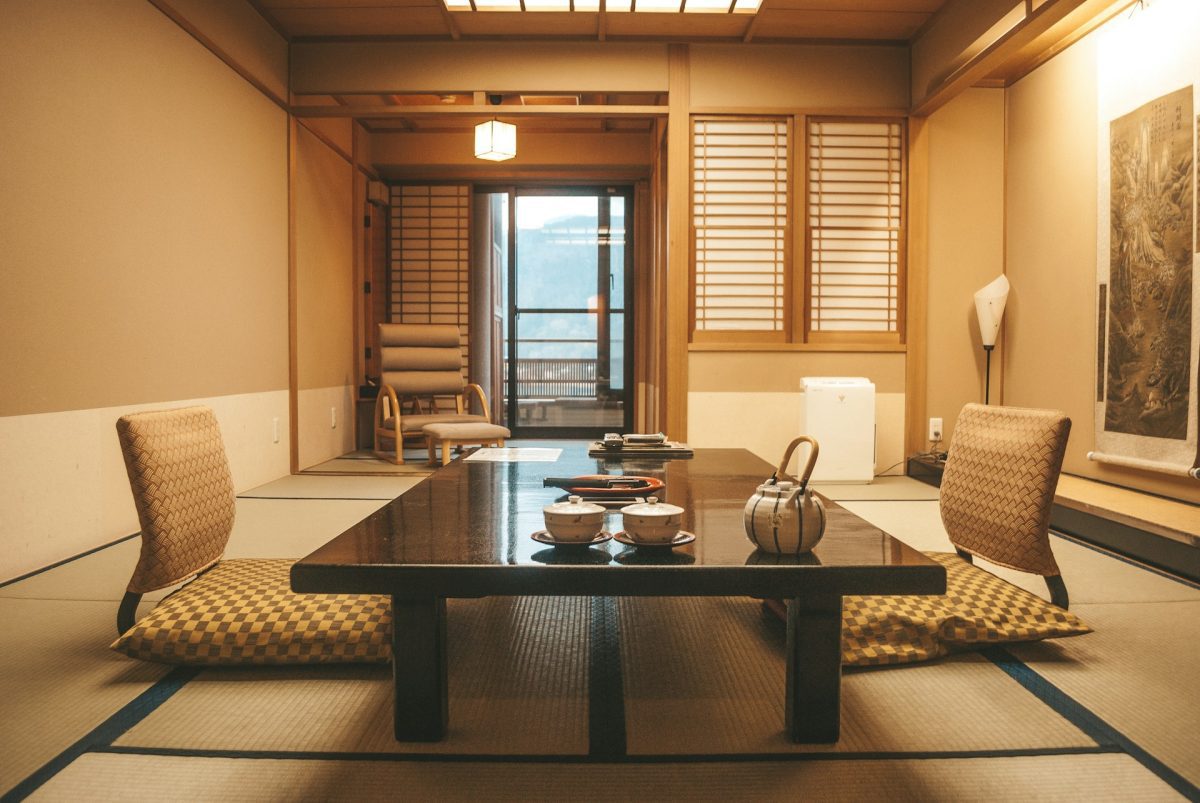
Hakone Kowakien Tenyu (Ryokan)
- Price Range: Approximately ¥30,000–¥50,000 per night
- Highlights: Offers upscale accommodations with luxury facilities and distant views of Mount Fuji.
Fuji Onsenji Yumedono (Ryokan)
- Price Range: Approximately ¥30,000–¥50,000 per night
- Highlights: A luxurious ryokan located just 500 meters from Lake Kawaguchiko, featuring traditional Japanese cuisine.
Sunnide Resort Yamanashi (Hotel)
- Price Range: Approximately ¥10,000–¥15,000 per night
- Highlights: Direct mountain views and comfortable accommodations, located in the Fuji Five Lakes region.
Mount Fuji Travel Itineraries: 1, 3 & 5-Day Trip Plans
These are suggestions to help you plan your trip. Feel free to customize them based on your interests and available time.
✅ 1-Day Mount Fuji Itinerary from Tokyo (¥5,000–¥8,000)
This itinerary focuses on experiencing the iconic views and cultural highlights of the Lake Kawaguchiko area, ideal for travelers with limited time.
- 5 AM: Depart Shinjuku by Fujikyuko Express Bus (¥2,000; 1 hour 45 minutes) to Kawaguchiko. Book in advance, especially during peak season.
- 7 AM: Witness the breathtaking sunrise at Chureito Pagoda – the iconic red five-story pagoda perfectly framed by Mount Fuji.
- 9 AM: Enjoy a hearty breakfast of Houtou noodles at a lakeside restaurant like Kosaku Houtou Fudo.
- 10 AM: Take a leisurely stroll through Oishi Park, enjoying the seasonal flowers (lavender in early summer, colorful foliage in autumn), or rent a swan boat on the serene Lake Kawaguchiko.
- 12 PM: Immerse yourself in the history and culture of the mountain at the Fujisan World Heritage Center.
- 2 PM: Explore the enchanting Oshino Hakkai spring ponds, admiring their crystal-clear waters and traditional surroundings.
- 4 PM: Catch the return bus to Tokyo.
✅ 3-Day Fuji & Hakone Loop Itinerary (¥30,000–¥50,000)
This itinerary combines the natural beauty of Mount Fuji with the artistic and scenic landscapes of the Hakone region.
Day 1: Hakone Scenic Highlights
- Travel from Tokyo to Odawara by Shinkansen, then transfer to the scenic Hakone Tozan Railway.
- Experience the Hakone Ropeway, offering stunning views of volcanic hot springs and the Owakudani valley’s geothermal activity.
- Enjoy a unique pirate-ship cruise across Lake Ashi, surrounded by stunning views of Mount Fuji (weather permitting).
Day 2: Fuji Five Lakes Exploration
- Take a bus (approx. 1 hour) to Kawaguchiko.
- Visit the Fujisan World Heritage Center, explore the Oshino Hakkai spring ponds, and venture into the Narusawa Ice Cave.
- Unwind in a relaxing onsen stay for the night at a hotel in the Hakone area (e.g., Hotel Green Plaza Hakone, known for its Fuji views).
Day 3: Mt. Fuji Partial Climb & Panoramic Views
- Take a bus to the Fujinomiya Trail entrance.
- Experience the thrill of climbing Mount Fuji without attempting the summit. This involves a scenic hike up to the 8th station for panoramic views (approx. 4-5 hours) before returning down.
- Unwind in a sunset-view onsen for the perfect finale.
✅ 5-Day Mount Fuji Deep Dive (¥50,000–¥80,000+)
This itinerary offers a deeper exploration of the Mount Fuji region, including cultural activities and natural wonders.
Days 1-3: Follow the 3-Day Fuji & Hakone Loop Itinerary.
Day 4: Cultural and Natural Immersion
- Embark on a guided lava-cave hike (approx. 2-3 hours) in the Aokigahara Forest (“Sea of Trees”). (Note: Staying on marked trails is advised).
- Attend a kimono-dyeing demonstration at the Itchiku Kubota Art Museum.
- (Mid-April to late May) Visit the vibrant Shibazakura Festival (pink moss phlox) at Lake Motosuko.
Day 5: Rural Exploration and Local Interaction
- Wrap up your adventure with a tranquil farm stay in Yamanakako. Enjoy fruit picking and a hands-on cooking experience with local flavors.
🎨 Customize Your Itinerary
- Art Lovers: Spend an extra day exploring the museums around Lake Kawaguchiko.
- Hiking Enthusiasts: Dedicate more time to the many scenic trails around Fuji’s base.
- Relaxation Seekers: Add another night at a ryokan or onsen resort with Fuji views.
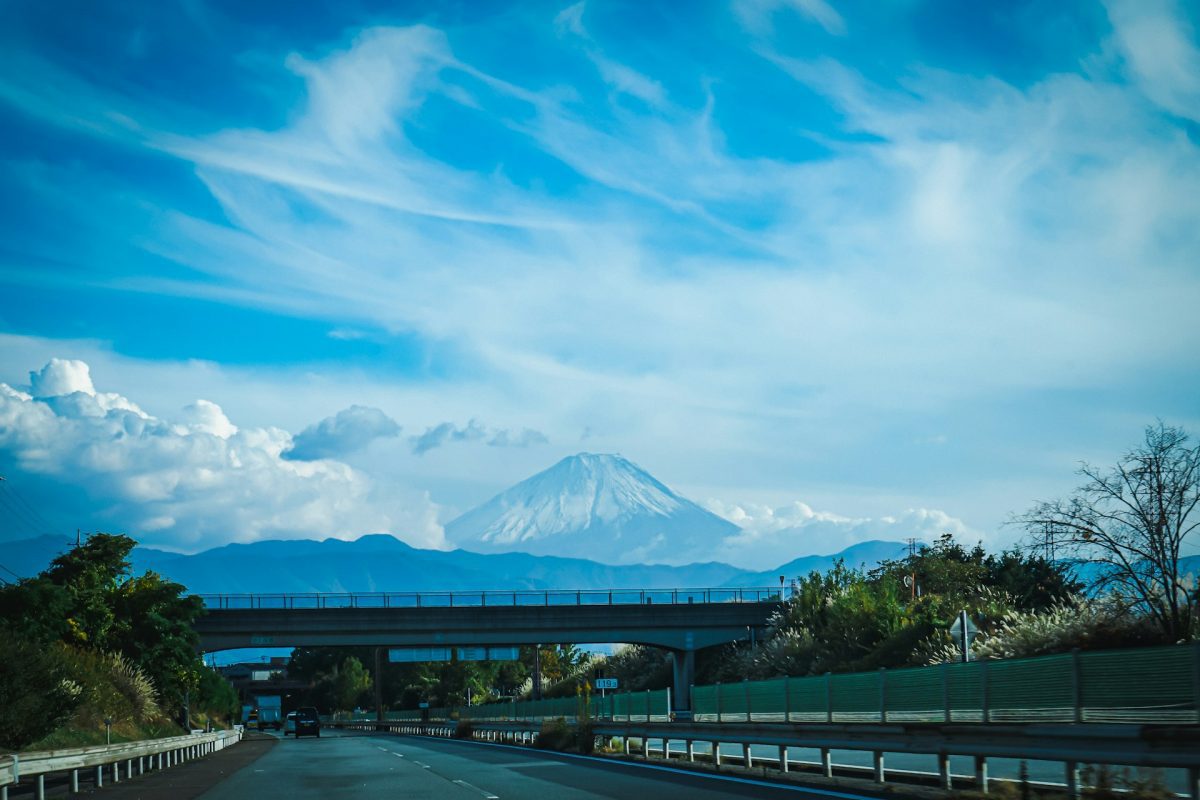
Also Check Out: Seoul Layover Guide: Insider Tips & Itineraries
How to Budget Your Mount Fuji Trip
Planning a trip to Mount Fuji involves considering various expenses. This section breaks down typical costs to help you estimate and manage your budget.
🗓️ Typical 3-Day Cost Estimates
These are estimates for a 3-day trip, including accommodation, transportation, and meals. Your actual costs will vary based on your choices and travel style.
- Budget: ~¥28,000 (Hostel stay + regional bus pass + convenience store meals)
- Mid-Range: ~¥65,000 (3-star hotel + rental car + restaurant dining)
- Premium: ¥220,000+ (Luxury ryokan + private guide + kaiseki cuisine)
💡 What Affects Your Mount Fuji Travel Budget?
Several factors can significantly affect your overall expenses:
Accommodation:
- Hostel dorms: ¥3,000-¥5,000 per night
- Business hotels: ¥8,000-¥12,000 per night
- Ryokans: ¥15,000+ per night
Transportation:
- Local buses: ¥500-¥1,500 per trip
- Highway buses from Tokyo: ¥2,000-¥3,000
- Shinkansen: ¥5,000+
- Rental car: ¥8,000-¥10,000 per day + gas + tolls
Food:
- Convenience store meals: ¥2,000-¥3,000 per day
- Casual restaurants: ¥3,000-¥5,000 per meal
- Restaurant dining: ¥5,000-¥8,000 per day
- Kaiseki meals: ¥15,000+ per meal
Activities & Attractions:
- Mount Fuji Panoramic Ropeway: ¥900
- Museums: ¥1,000-¥2,000 per person
- Guided hikes: ¥5,000+ per person
🎯 Personalize Your Spending
Here are some tips to help you tailor your budget based on your interests:
- Art Lovers: If you’re interested in art and culture, consider adding an extra day to explore museums near Lake Kawaguchiko. Remember to budget for entrance fees.
- Outdoor Enthusiasts: If you plan on hiking or exploring the Fuji Five Lakes, dedicate more time and budget for gear rentals, guided tours, or transportation to trailheads.
🧳 No matter your budget, Mount Fuji offers an unforgettable experience for every kind of traveler.
Mount Fuji Travel FAQs
When is the best time to visit Mount Fuji?
The best time to visit depends on your interests.
- Summer (July to early September): Ideal for climbing to the summit.
- Spring (March to May): Pleasant weather for sightseeing and photography, with cherry blossoms.
- Autumn (September to November): Pleasant weather for sightseeing and photography, with vibrant foliage.
- Winter (December to February): Opportunities to witness the “Diamond Fuji” and enjoy fewer crowds.
Visibility of Mount Fuji is generally best in winter and autumn.
Is it hard to climb Mount Fuji? Can beginners summit safely?
Climbing Mount Fuji can be challenging, with steep sections and high altitudes (reaching 3,776 meters). For those seeking Mount Fuji climbing trails for beginners, the Yoshida Trail is considered the easiest and is popular with beginners.
While beginners can summit safely, it’s crucial to be adequately prepared with:
- Proper gear
- Careful pacing
- Awareness of altitude sickness
Hiring a guide is highly recommended, especially for first-time climbers or those unfamiliar with mountain hiking.
Are guided tours necessary?
While 68% of climbers go independently, those with guides have a 22% higher success rate and reach the summit 35% faster thanks to route planning and pacing support.
What should I pack for a Mount Fuji climb?
Essential items for climbing Mount Fuji include:
- Sturdy hiking boots (broken-in)
- Layered clothing (including warm gear)
- Waterproof rain gear (jacket and pants)
- Headlamp or flashlight (with extra batteries) for night climbs
- Sufficient water (at least 2-3 liters) and high-energy snacks
- Sunscreen, sunglasses, and a hat (for sun protection)
- First-aid kit (including blister treatment)
Note: Gear rental services are available, but book early during peak season.
What are the best things to see around Mount Fuji besides climbing?
Highlights around Mount Fuji include:
- Scenic Viewpoints: Chureito Pagoda, Fuji Five Lakes (Lake Kawaguchiko, Lake Yamanakako)
- Natural Wonders: Oshino Hakkai Springs, Shiraito Falls, Aokigahara Forest
- Cultural Sites: Itchiku Kubota Art Museum, Saiko Iyashi no Sato Nenba (traditional village)
- Relaxation: Onsen with mountain views
How many days do I need in the Mount Fuji area?
- One day from Tokyo is enough for Lake Kawaguchiko highlights.
- Three days allow a deeper experience, possibly including Hakone.
- Five days is ideal for climbing and full regional exploration.
How do I get to Mount Fuji from Tokyo?
The most common ways to travel from Tokyo to the Mount Fuji area are by highway bus or train, both taking around 2 to 2.5 hours to reach Lake Kawaguchiko. The Shinkansen can also be taken to Shin-Fuji Station, followed by a local bus. Highway buses are often a more direct and affordable option.
How do I travel around the Mount Fuji area?
Local buses (like the Fujikko-Go) and the Fujikyu Railway serve the region well. Renting a car offers more flexibility. For public transport users, the Fuji Excursion Pass is a cost-effective choice.
Can I see Mount Fuji from Tokyo?
Yes, Mount Fuji can be seen from various locations in Tokyo on clear days. Popular viewpoints include the Tokyo Skytree, the Tokyo Metropolitan Government Building, and certain parks and observation decks. Visibility is generally better in the early morning and during the winter months when the air is clearer.
How much does it cost to climb Mount Fuji?
The cost to climb Mount Fuji can vary. If climbing independently, budget for transportation, accommodation (if staying in mountain huts), food, and gear (if renting). Mountain hut stays can range from ¥7,000 to ¥10,000 per night. Hiring a guide can cost around ¥25,000 per day.
Are there any entry fees for attractions around Mount Fuji?
Yes, some attractions like the Mt. Fuji Panoramic Ropeway, the Itchiku Kubota Art Museum, and the Kawaguchiko Music Forest Museum have entrance fees. However, many viewpoints like Chureito Pagoda and Oshino Hakkai are free to visit.
Is Mount Fuji accessible for people with disabilities?
Some sites like Chureito Pagoda involve stairs, but others – such as guided tours of Aokigahara Forest, the Fujisan Heritage Center, and accessible hotels like Fuji Lake Hotel – cater to travelers with mobility needs. Kawaguchiko is well-connected by public transport, with accessible buses and stations.
What are some local foods to try near Mount Fuji?
Local culinary delights include the hearty Houtou noodles, the unique egg salad sandwich from Haostay Coffee, delicious beef katsu at Koshuya, and Fuji-inspired shortbread cookies from Fujiyama Cookies. The region is also known for its fresh seafood and sake.
When is Mount Fuji most visible?
Visibility of Mount Fuji is generally best during the colder months, particularly from October to May, with October often boasting high rates of clear views. Summer haze can sometimes reduce visibility. Early mornings tend to offer the clearest views.
Are drones permitted around Mount Fuji?
Drone use is restricted around Mount Fuji. Certain CAA-approved zones like Lake Tanuki permit flying with proper permits and liability insurance. Always check the latest rules before flying.
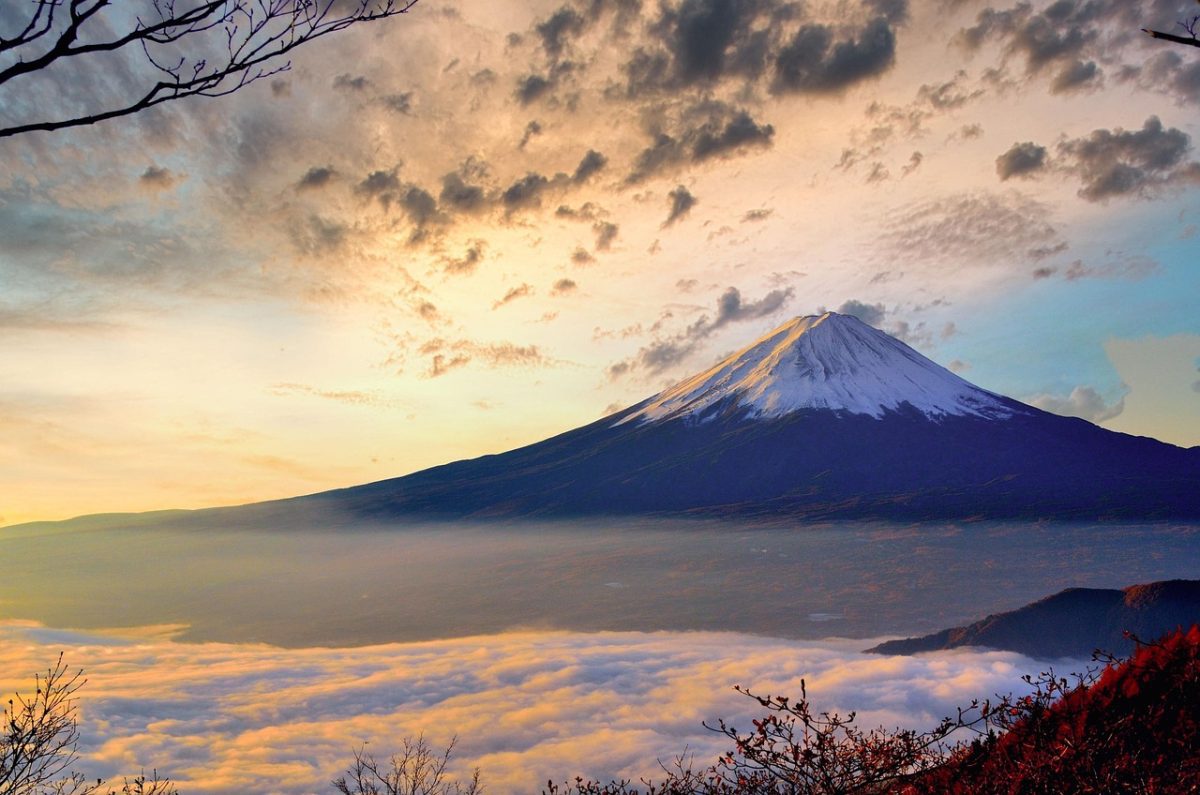
Final Thoughts – Your Mount Fuji Journey Begins Now
Mount Fuji has transformed before my eyes through countless visits across every season — from winter’s serene beauty to the vibrant energy of summer. In all that time, it has never failed to inspire awe. It’s more than a mountain; it’s a living part of Japan’s soul.
Now, I’m thrilled to share what I’ve learned to help you plan your own unforgettable adventure. Whether you’re drawn by culture, nature, or pure curiosity, Mount Fuji has something for you.
Your journey to this timeless icon begins now – and the memories you make will stay with you forever.


